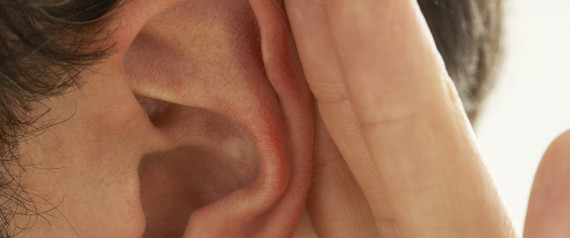
Botanically called Carum carvi, caraway is a biennial plant, which belongs to the family Apiaceae. Some of the health benefits of caraway seeds are listed as under:
Caraway seeds lowers the concentration of LDL cholesterol, by preventing its re-absorption in the colon. As such, caraway seeds help in preventing a variety of cardiovascular diseases like heart attack and artery congestion.
Caraway seeds also help relieve the symptoms of bronchitis.
- It is a rich source of anti-oxidant compounds including carotene, lutein, zeaxanthin and cryptoxanthin
- These compounds negate the effect of free radicals produced as a result of biochemical reactions, thereby preventing the formation and proliferation of cancer cells.
- On account of its detoxifying properties, it also helps in lowering the pace of aging. It helps in reducing the signs of aging like fine lines, patches on skin, dark spots and wrinkles.
- They help boost immunity. It prevents the exhaustion of T-cells, which in turn prevents the strain on the immune system, thereby strengthening it and preventing against infections and diseases.
- Help in improving the texture of the skin on account of its rich Vitamin E content.
- They have a strong and pungent odor. As such, the seeds may be chewed to get rid of the bad breath as well as the insipid or bland taste in the mouth.
- Also serves as a tonic for pregnant women.
They are a potent emmenagogue. The seeds regulate the menstrual cycle and regularize your periods. They also help reduce pre-menstrual syndrome (PMS) like pain in lower abdomen, bloating and water retention in the body, nausea, and loss of appetite, among others.
Enhances eyesight and also improves skin and hair texture.
Prevent impotency in males by stimulating sperm production.
They are a potent carminative, which help clear up cough and phlegm from the respiratory tract and relieves congestion.
They have proven effective for lactating mothers by promoting milk secretion. Lactating women may consume caraway seeds in honey to enhance milk production for the health of the baby.
Promote the activity of glands, thereby maintaining the overall physiology of the body.
Regulate the function of kidneys, cleaning the body waste materials and toxins.
Its seed extract may also be used in the treatment of scabies.
It may also be deployed to cure ear infections and pain.
The seeds are a potent antiseptic agent, which prevents and cure infections.
It is also effective in the treatment of arthritis, rheumatism and inflammation of joints.
They may also be used to cure severe headache and migraine.
Usage of caraway seeds is an effective remedy to cure toothache and other oral afflictions.
Caraway seeds may be used as a flavoring agent in the kitchen. It may be used in sausages as well as meat preparations.
Digestive Health:
Caraway seeds are widely used to cure various digestive disorders including irritable bowel syndrome. It promotes digestion and thereby prevents indigestion and other causes of stomach afflictions. It adds bulk to the food on account of its rich dietary fiber content, which regulates bowel movement and prevents constipation. Caraway seeds may also be used as antihelmintic to remove helminthes like hook worms from the intestinal tract. It also eases dyspepsia and hysteria. Caraway seeds may also be used as appetizers.
It may be used to make caraway tea to cure gas and flatulence. It also helps prevent colic disorders.
Information & Facts:
Some of the basic information & facts about caraway seeds are as follows:
Caraway is also called Persian cumin and meridian fennel, and is a native of Asia, North Africa and Europe. The plant is cultivated annually in colder regions, while it is cultivated as a biennial plant in temperate regions. The plant grows well in warm and well-drained soil.
The caraway plant grows up to a height of 50-60 cms and bears thread-like, finely divided and feathery leaves.
They are actually fruits, which are crescent-shaped, bearing ridges. Caraway seeds (fruits) bear five ridges per seed; ridges are pale in color and texture.
It contains volatile oil, which contains chemical substances like limonene, carvone, pinen, carveol, thujone, furfurol and cumuninic aldehyde.
Some of the vital minerals present in them are iron, calcium, copper, manganese, potassium, zinc, selenium and magnesium.
Its seeds are a rich source of certain vitamins including Vitamin A, Vitamin B-complex, Vitamin C and Vitamin E.
It has a warm and peppery aroma and as such, it is widely used in culinary preparations, especially Mediterranean and European cooking.
It may be used as infusion, poultice and tincture.
Some of the caraway seed supplements are anise, fennel and cumin.
Side Effects Of Caraway Seeds
There is no scientific evidence on the side-effects of caraway seeds, and they are generally known to have positive effects on health. However, high dose of caraway seeds may lead to kidney and liver afflictions, attributed to the content of volatile oils.
Source: diet health club






 Hyderabad, Nov 26 (IANS) The American Academy of Ophthalmology (AAO) honored eminent ophthalmologist Gullapalli N. Rao with its outstanding humanitarian service award, said a statement here Tuesday.
Hyderabad, Nov 26 (IANS) The American Academy of Ophthalmology (AAO) honored eminent ophthalmologist Gullapalli N. Rao with its outstanding humanitarian service award, said a statement here Tuesday.



